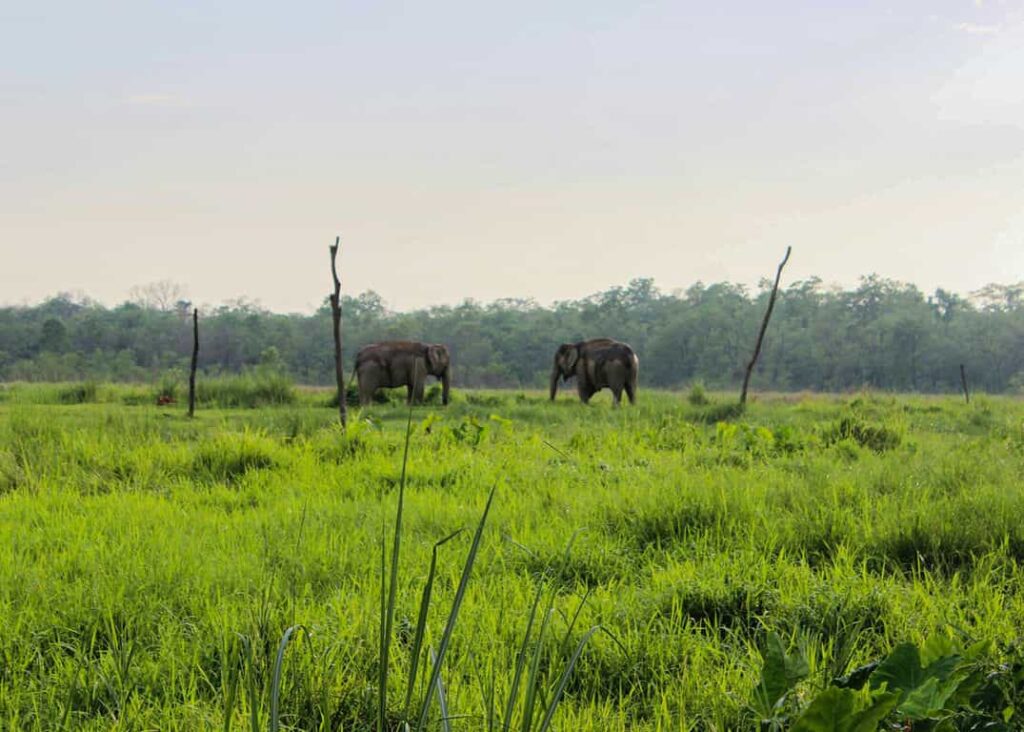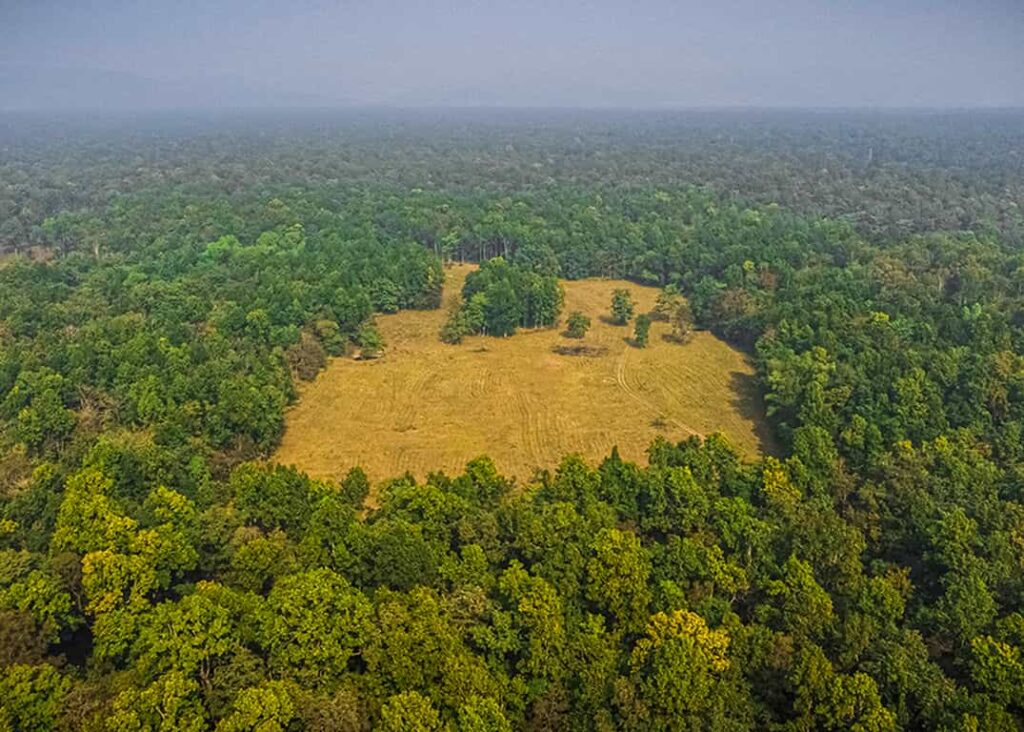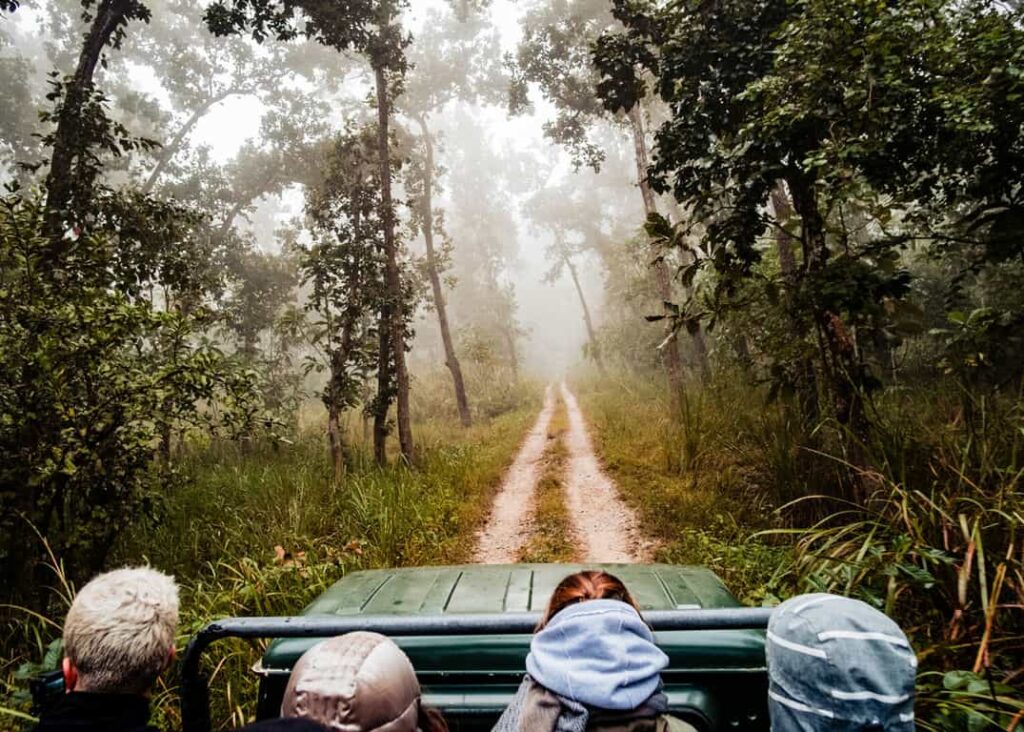Parsa National Park is a protected area situated in the Far-Western Region of Nepal. It is one of the smallest parks in the country but is home to a diverse ecosystem and rich wildlife. The park is known for its diverse forest types and is a haven for several endangered species.
The park is also a popular tourist destination, with visitors coming to explore the beautiful forest landscape and observe the wildlife. This National park also hosts several adventure activities such as trekking, bird watching, and nature photography.
Quick Facts to know about Parsa National Park
- Parsa National Park is established as a wildlife reserve in the year 1984.
- It is the 12th national park of Nepal.
- The Park covers an area of 627.39 km2.
- It covers an area of the Parsa, Makawanpur, and Bara districts.
- Parsa National Park ranges in altitude from 1,427ft to 3,120 ft in the Siwalik hills.
- It was declared as a buffer zone in 2005 which comprises 285.3 km2.
- The preserve area has been extended by 128 km2 in 2015.
- It holds out up to Birgunj and Hetuada highway, in the east.
- The Park is home to indigenous communities which include the Tharu people.
- Parsa National Park is joined by the Indian Wildlife Reserve, Valmiki National Park, and Chitwan National Park in the west side.
- Before its transformation into a protected area, the place was known as ‘char khose jadi’ used by running a class as a hunting ground and by local settlements.
- Char khose jadi was given because of the thickness and width of the forests. It has developed the temper of rare animals and plants since its establishment.
- The Parsa National Park has faced numerous conservation challenges that include habitat loss and poaching but with the help of conservation organizations and local communities.
Highlight of Parsa National Park
Parsa National Park gives you a great opportunity to experience natural beauty. Parsa National Park is a sub-tropical jungle in the south-central Terai of Nepal with diverse flora and fauna. The place is a religiously important site and a natural viewpoint as it lies on the hilltop.

It includes a different number of animals, plants, flora, and fauna. the parks have diverse ranges of habitats including subtropical forests, grasslands, and riverine forests that support the rich biodiversity of flora and fauna.
Also Read: Langtang National Park: Things to Know
The Park is famous for its diverse ecosystem and rich wildlife. The park is a haven for several endangered species and is also a tourist destination for trekkers, adventure seekers, nature photographers, and campers. The park is well-known for its stunning forest and mountain scenery and the opportunities it provides to encounter rare wildlife. It offers a wide range of activities and is a great destination for a day’s outing or an extended camping stay.
Flora and fauna
The Park provides natural terrain for 500 species of birds. Commonly it is for conserving rare animals like Asian elephants and other animals like the Bengal tiger, wild dog, musk deer, sambar deer, sloth bear, hyena, jungle cat, leopard, etc. It is famous for reptiles and snakes like cobra, python, etc.
The best time to visit
The vegetation in the Parsa National Park has a subtropical monsoon climate and the forest is composed of tropical and sub-tropical forest types. The hills are covered with pine, Khari, sissoo, and silk cotton were found in water areas.

During winter (October – December) provides pleasant temperature with the clear skies. At night the temperatures can drop to 0 degrees Celsius. During spring (January – march) temperatures rise and water becomes scant. In summer ( April- June) the days become hot and humid with temperatures rising up to 400 c., and the monsoon brings cooling rains (July – September).
You may also like: Everything you need to know about Makalu Barun National Park
You can visit the per at any time you want. There you will see the temples paying homage to Hindu lord Shiva and goddess Parvati. The park has been protecting different kinds of species of plants and wildlife for many years. Here you can do jungle safari, bird watching, hiking trails, canoe rides through greenery forests, and so on.
Parsa National Park offers a range of activities for visitors
Camping: The park has numerous camping sites which provide an authentic wilderness experience to visitors.
Nature Photographers: The park is a favorite spot for nature photographers to take shots of the spectacular forest and wildlife.
Wildlife Safari: The perfect way to experience endangered and tropical wildlife is by doing the safari. The people can choose between the jeep safari and the elephant safari. Jeep safari and elephant safari is led by experienced guides who are well-known about the wildlife and the habitats of the Park. During the safari, the visitors can expect to see Bengal tigers, a horned rhino, a leopard, an elephant, and many other animals.

Bird Watching: The Park provides natural terrain for 500 species of birds. It makes a paradise for bird watchers. The people can spot or explore the various kinds of birds from small birds to large birds. Parsa National Park has some most famous birds including the Bengal florican, crested serpent eagles, and great hornbill.
Trekking/Hiking Trail: The park is a favorite spot for nature photographers to take shots of the spectacular forest and wildlife. It provides stunning views of the landscapes and the opportunity to experience its natural beauty. The hiking trail of the park is well maintained. The visitors are asked to recommend hiring a guide who can know about the different flora and fauna of the parks. Parsa National
Let our expert team at Asian Heritage Treks and Travel take care of everything — from guided tours to personalized packing tips and travel arrangements.
Plan My Nepal Trip







